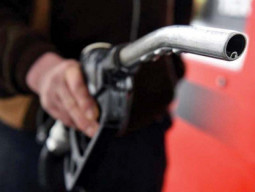
ISLAMABAD: The Oil and Gas Regulatory Authority (Ogra) has changed the pricing mechanism for public gas utilities shifting from a fixed rate of return on assets to market and price-based weighted average cost model.
Earlier, the utilities had been receiving 17.8% fixed rate of return on their assets. The utilities would now have to work efficiently to earn better returns and profits in line with market financial parameters, said an Ogra official.
Under the new model notified by the regulator, the rate of return will change in line with market financial indicators and the fixed return will no more remain in place.
On last day, PML-N govt shies from hiking prices
Therefore, Ogra said the two companies would experience volatility in their operating and financial parameters and would be exposed to commercial risks. All indirectly generated revenues and income from any activity will be shared between the licensee and consumers as per the authority’s decision.
The determination of income, directly or indirectly, as operating and non-operating, as a matter of principle, will be judged by the authority based on the degree of relevance with regulated activity, degree of risk and required incentive for the company, management efforts in operation of the activity and overall tariff structure.
A market-based rate of return - weighted average cost - will be applicable to the transmission and distribution network before tax. Corporate tax paid by the licensee will be borne by the company.
For all practical purposes, the integrated transmission and distribution network will get the weighted average cost for the distribution network.
OGRA to grant 33 licenses in LPG sector
Under this model, the regulator has taken a risk-free rate for the 20-year Pakistan Investment Bond (PIB) calculated as average for the past 10 years prior to the determination of weighted average cost.
The market return has been calculated based on actual stock data using the KSE-100 Index for the past 15 years. The cost of debt is based on six monthly averages of the past 12-month Karachi Inter-bank Offered Rate (Kibor) which comes to 6.25%.
Kibor spread has been taken at 2% in order to offset the anticipated risk of variation. Based on this calculation, the regulator has worked out weighted average cost at 16.28% for transmission and 17.43% for the distribution network.
OGRA under pressure to recover Rs18 billion from gas consumers
The government has been working on unbundling the transmission and distribution network in the gas sector. Under this model, the regulator said all sources of income relevant to distribution network activities including late payment surcharge, other income and meter manufacturing will be charged to the distribution activity.
The income on account of gas condensate, extraction of LPG/NGL from the transmission line and field are relevant to the sale activity.
In case the sale and distribution activities are combined in the set-up, the same will be charged to the distribution network. The transmission activity is involved primarily in the transportation of gas and act as a common carrier.
Published in The Express Tribune, June 5th, 2018.
Like Business on Facebook, follow @TribuneBiz on Twitter to stay informed and join in the conversation.























1713425884-0/Tribune-Collage-Feature-Images-(10)1713425884-0-270x192.webp)

























COMMENTS
Comments are moderated and generally will be posted if they are on-topic and not abusive.
For more information, please see our Comments FAQ